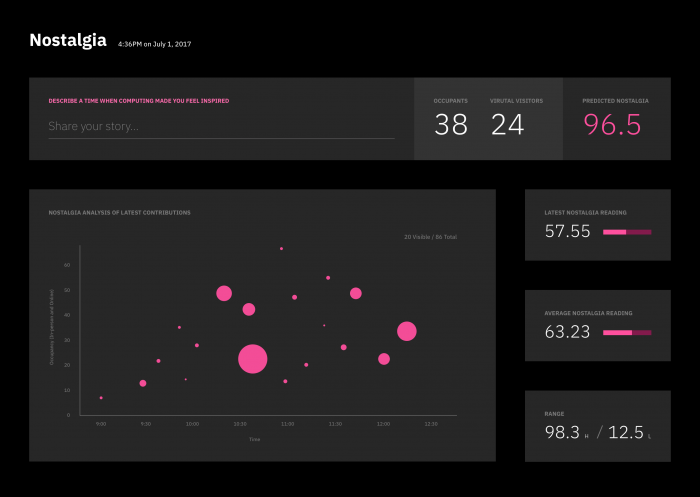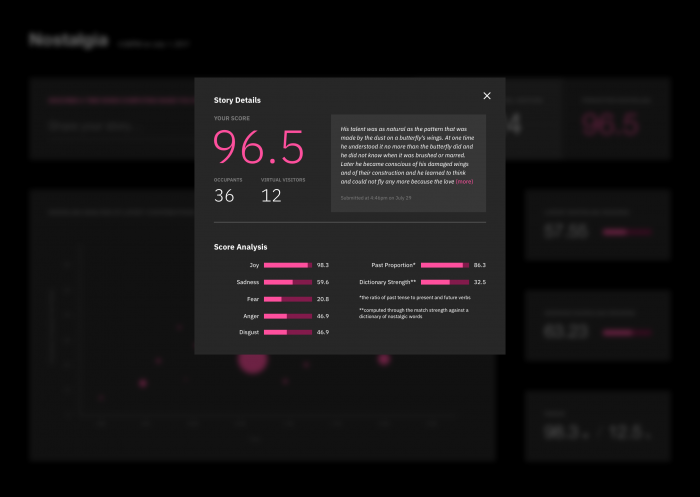Nostalgia (2017)
web, acrylic, electronics, hourglass
Can we quantify the complexity of human emotion?
Sentiment analysis has enabled computers to develop aspects of emotional awareness and intelligence. Computers now have the ability to distinguish simple emotions like joy, sadness, fear, anger and disgust from human input. Machines are learning to feel based on our interactions with them and the digital traces we leave behind. But, human emotion is often indeterminately complex, non-binary and nuanced. How can we begin to explain to a machine the more nebulous emotions we struggle to define?
Nostalgia is one of such emotions, and its complexity leaves many of us befuddled when it comes to explaining its qualia. “A bittersweet longing for the past” seems to be the most cited definition, however it varies individually, culturally and historically. It can be felt by the individual, but it can also be felt by the collective. Sometimes it is more somber than joyful. Sometimes it’s felt in response to an object as opposed to an experience. We can even be nostalgic for objects, experiences and times we haven’t even encountered.
If AI will ultimately be a reflection of ourselves, how can it understand emotions we can’t describe to one another?
Nostalgia is a work that seeks to teach a computational system the intricacies behind the complex emotion it refers to. In doing so, the underlying system uses real-time contributions from participants in order to compute a quantitative representation of a qualitative emotion. Through shared stories from participants, Nostalgia computes a relative nostalgia index driven from historically nostalgic texts. It’s underlying model is derived from the Southampton Nostalgia Scale.
The system asks participants to contribute a story, a sentimental experience, and in doing so, it makes an attempt at quantifying its underlying nostalgia derived from a mix of simpler emotions, its propensity to refer to past experiences and its correlation to keywords that correspond to sentimentality. The story along with its meta data, such as time of contribution and the number of others who could’ve seen its entry, persists in a database that enables the system to predict the nostalgia indices of future contributions.


The cumulative, current and imminent nostalgia indices are represented in physical time-boxes that pay homage to the phrase “looking at the world with rose-colored glasses”. Each time-box is back-lit with a rosy hue and contains an hourglass that operates by way of a motor. Stronger nostalgia indices correlate with rosier hues and prolonged operation of the hourglasses.
